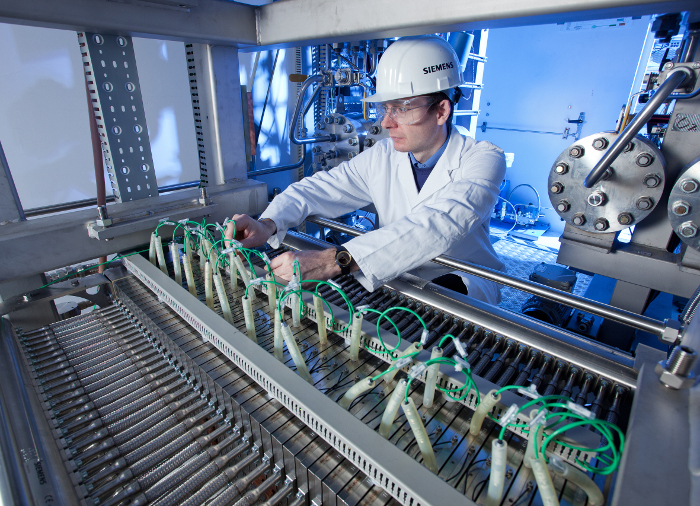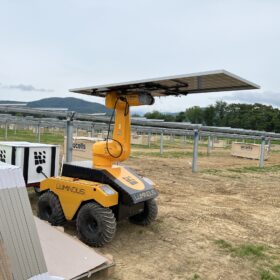Australia’s chief scientist Dr Alan Finkel spoke out in Adelaide this week before his plenary address to the 2019 International Conference on Hydrogen Safety in favour of some modicum of CCS in Australia’s future hydrogen economy. Due to its high cost and low-efficiency, CCS has proved itself about as useful as a flyscreen door on a submarine in recent years, but Finkel seems unusually attached to the idea.
Tristan Edis, Director of Analysis and Advisory at Green Energy Markets told pv magazine Australia that while Finkel’s logic is understandable, it is ultimately counter-productive.
Finkel’s persistence with CCS, says Edis, operates on the logic that there needs to be a significant amount of build-up in hydrogen-related technology, such as fuel cells and hydrogen transportation infrastructure in places like Japan and Korea. “Finkel reasons that we can do this faster if we take an interim step of making hydrogen available in greater amounts at more affordable cost sooner by using fossil fuels,” says Edis. There are several problems with this, the first, argues Edis, is that Finkel is far too optimistic about the costs of CCS.
Edis maintains the great lesson of wind and solar (and Tesla), is that rapid progress is made when “pure-play companies [are] unconflicted by concerns about preserving the value of existing investments to drive forward meaningful technological progress in the low carbon technologies.” When companies spread themselves too thin, trying to juggle CCS and low carbon technologies, both work to cancel each other out. “You need companies whose primary existence lives off hydrogen succeeding,” argues Edis, “Fossil fuel companies will struggle to put their heart and soul into making hydrogen succeed.”
The other fundamental issue in Finkel’s dovish hydrogen plan is that it acts as a fig leaf to fossil fuel companies, a lifeline despite their long-recorded tardiness in acting for a planet whose life is on the line. “This danger is very real,” notes Edis, who also points out that both the Howard Government and the George W. Bush Administration both used CCS as an excuse to avoid taxing carbon and pulling support from renewable energy technologies.
“While it sounds like a good idea to try to keep your options open,” says Edis, “the reality is that this can result in spreading ourselves too thin and doing nothing particularly well.”
There are other alternatives than merely waiting for electrolyser development or CCS. Gniewomir Flis of Liebreich Associates recently published a thread in Twitter entitled “Why I’m bullish on electrolysis” in which Flis argued that the key to bringing on hydrogen is bringing down power prices. Edis agrees, suggesting an electricity price of AUD$30/MWh would be competitive enough with gas prices as to render the suggestion of CCS redundant.
Flis also points out that electrolysers, even in their current development stage, actually turn curtailment into a resource – as hydrogen is producible from the curtailed energy which usually goes to waste when a grid is overloaded. Australia’s outdated grid and transmission infrastructure ensure curtailment is a common occurrence, and thus excess energy is being wasted regularly across the country. “We should encourage overcapacity,” says Flis, even if wind and solar are competitive in their own right, pushing renewable capacity with subsidies is “the biggest cleantech multiplier we have.”
Whilst Finkel admits that the majority of a future hydrogen economy would, “and probably should”, be produced by electrolysis via solar and wind energy, his steadfast support of CCS is holding hydrogen back.
This content is protected by copyright and may not be reused. If you want to cooperate with us and would like to reuse some of our content, please contact: editors@pv-magazine.com.









By submitting this form you agree to pv magazine using your data for the purposes of publishing your comment.
Your personal data will only be disclosed or otherwise transmitted to third parties for the purposes of spam filtering or if this is necessary for technical maintenance of the website. Any other transfer to third parties will not take place unless this is justified on the basis of applicable data protection regulations or if pv magazine is legally obliged to do so.
You may revoke this consent at any time with effect for the future, in which case your personal data will be deleted immediately. Otherwise, your data will be deleted if pv magazine has processed your request or the purpose of data storage is fulfilled.
Further information on data privacy can be found in our Data Protection Policy.